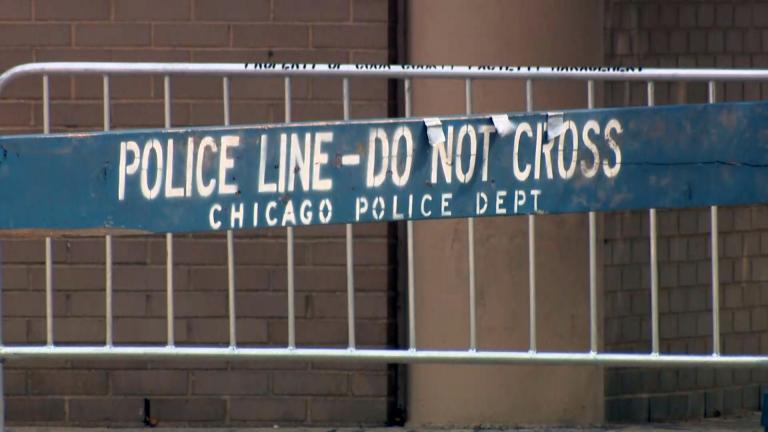Northwestern sociology professor Andrew Papachristos has a striking idea when it comes to thinking about shootings in Chicago.
The city’s violence epidemic, he said in his “Firsthand Talks” presentation, “is decidedly not random.”
Part of Papachristos’s work at Northwestern, where he directs the university’s Neighborhood and Network Initiative, applies the science of social network analysis to understanding gun violence. That involves finding connections between shootings that might appear random, but are in fact linked by a variety of factors.
“What our research really started to take seriously was who’s going to get shot, at that individual level,” Papachristos said. “What we find over and over again in Chicago and in about 8 to 10 other cities in the U.S. is that a small number of people in communities that are experiencing gun violence are in these networks where almost all the violence is.”
More coverage: Watch this full special episode of “Chicago Tonight.”
Papachristos says that goes as far as being able to identify specific people who could be shot next.
“They seem very random, but in reality most are not, most are on these chains in these networks, and you can make sense of them that way,” he said. “You’re starting to see people reach these individuals, outside of the criminal justice context, to provide services, support, trauma response … we’ve been doing it in public health, but in gun violence prevention it’s a relatively new approach.”
Papachristos’ work is one example of efforts in Chicago and across the country that include data and research to aid in violence prevention.
Another local advocate is Franklin Cosey-Gay, executive director of the Chicago Center for Youth Violence Prevention at the University of Chicago.
“Essentially what we’re looking to do is better understand the nature of violence and what factors either increase risk, or serve to protect or promote positive outcomes among youth,” said Cosey-Gay. “And primarily we’ve done that through the development, implementation and evaluation of tested and effective school-based and family-based interventions.”
Cosey-Gay says his organization has partnered with community groups in neighborhoods like Bronzeville to use data to create community profiles, which “look at public data to … understand what gaps they feel exist in terms of programming related to the data. So through this process, what we were able to do is identify that in the Bronzeville area that there are more opportunities needed to focus on youth who have been justice-involved,” he said.
The goal, Cosey-Gay says, it to provide community stakeholders with the “technical assistance and support to help them do what they do, to help them understand the importance of building their capacity.”
Papachristos and Cosey-Gay join “Chicago Tonight” in conversation.
Related stories:
‘Firsthand’ Accounts: How Guns Changed the Course of Their Lives
Lessons From the Front Lines of Violence Prevention and Healing
What Policymakers Can Do to Help Reduce Gun Violence
WTTW Launches New Digital Series ‘Firsthand: Gun Violence’



